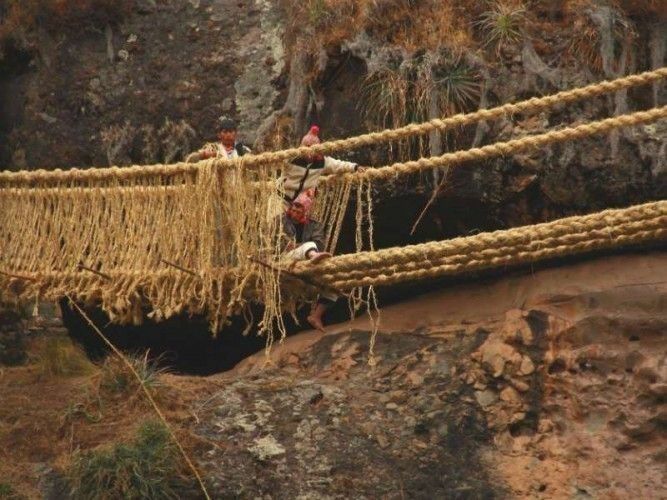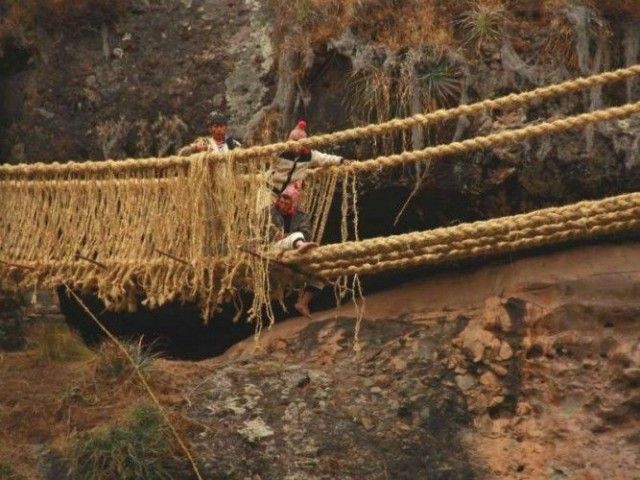In the first half of June members of four Quechua communities high in the Peruvian Andes about 180 km (110 miles) from Cusco come together ceremonially cutting the ropes of the Q’eswachaka bridge, the last remaining traditional Inca rope bridge, let it fall into the Apurimac river below and then rebuilt it by hand in a 4-day ceremony just like their Incan ancestors did over 600 years ago.
During Inca times, rope bridges were an essential part of the extensive Andean road system, the Qhapaq Ñan, spanning over rivers, canyons and abysses. The simple suspension bridges were built by hand using a local grass called ichu that was braided or woven into strong ropes called q’oya.
In an elaborate process the ropes were skillfully connected, reinforced with wood and attached on each side of a canyon to stone anchors to build quite sturdy bridges that allowed pedestrians and livestock to cross. They even withstood the weight of the conquering Spaniards on their horses.
To ensure the strength and safety of these rope bridges, they were maintained once a year by local villagers replacing the natural ropes and repairing damages to the wood. This old Inca tradition still lives on, even though just in one place in Peru and at one specific date each year.
Every June members of four Quechua communities - Huinchiri, Choccayhua, Chaupibanda, and Ccollana Quehue - come together to rebuild the Q’eswachaka bridge located near Huinchiri in the Canas province about 180 km (110 miles) south of Cusco. For them, the Q’eswachaka bridge is a beloved and respected structure that links the past and the future. It’s the soul and spirit of their Incan ancestors and represents life and power.
You can read the full article with videos and more images in our Tourist attractions & Sights section under "Traditional rebuilding of the Q’eswachaka Bridge"




























